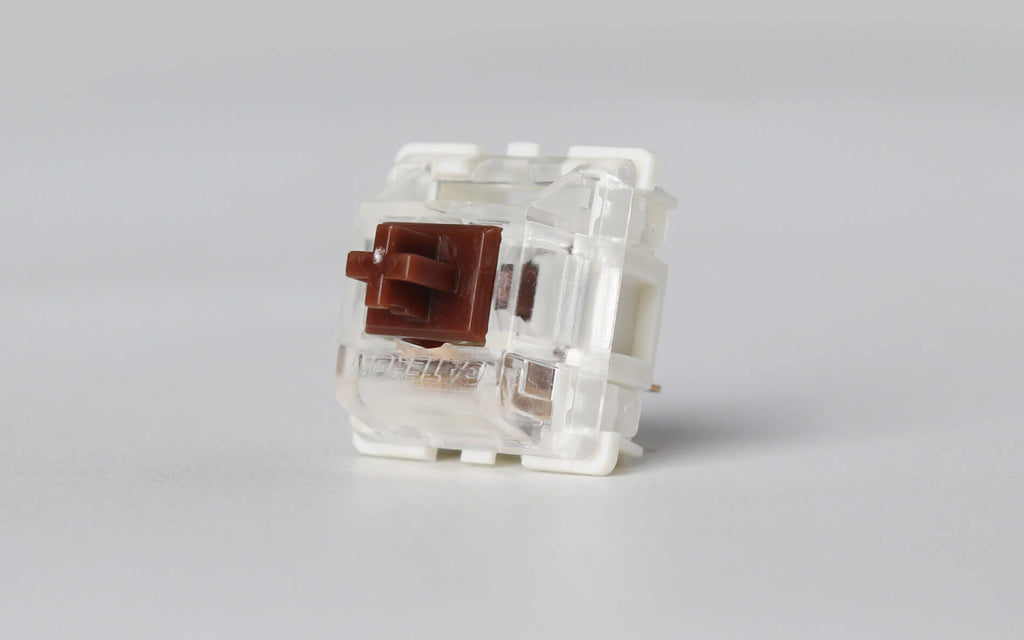It seems a lot of people are not familiar with the Optical switch because it’s a relatively new trending product. So, today we’ll be talking about some of the differences between optical and mechanical switches.
What are Optical Keyboard Switches and How do They Work?

As the name implies, the optical switch uses light induction to trigger the switches. It works with the mechanical switch to block the light beam. When the switch is pressed, the stem of the switch moves downward, triggering the light sensor on the PCB and activating the key.
That’s why optical switches are faster than the traditional switch as no physical contact is needed to send an electrical signal; eliminating the need for a debounce delay.
Also, because there is no physical contact, these switches are usually more durable. The lifespan of the traditional switch is 50 million key presses while the optical switch can double that life span and can last 100 million.
To be clear, optical switches still have mechanical components. Just like a standard mechanical switch, they have physical moving parts. When you press the key cap, a stem moves within a shaft, and a spring pushes the switch back to its reset position. Optical switches can have the same physical characteristics as regular switches, similar to a linear action (like Reds), tactile (Browns) and clicky (Blues).
Additionally, optical switches remove the need for soldering switches to a PCB. However, since optical switches are not widely used in mechanical keyboards, there are limited switches to choose from unlike mechanical switches.
At Keychron, we have designed and produced our own Keychron optical switches to use on the K8 keyboard. Also, we have created Keychron optical switches for the K2 in the future.
The K4 currently utilizes the LK switch, but we will use the Keychron optical switches for the K4 very soon. We are determined to make the optical switch in all our keyboard series.
What are mechanical switches?

Mechanical switches are similar to optical switches, but they have a much longer history. The key difference from the optical switch is their activation method. The switch core (trigger) and spring which is sleeved on the internal switch column, which controls the operation of the entire switch when triggered. These switches rely on contact between two conductive materials to send a signal through a circuit board to the computer when a key is pressed.
Since mechanical switches have been popular for a long time, the market has so many different mechanical switches: blue switch, red switch, brown switch, black switch, silver switch and so on. And there are three types of mechanical switches: linear, tactile, and clicky. They are defined by their keystroke behaviour.
With Keychron mechanical keyboards, we chose Gateron switches. If you want to know more about the Gateron switch, please check out our previous article here.
The advantages of traditional mechanical switches are obviously it's customizability and availability. Users can choose different switches according to their preferences and needs. The main switch brand/manufacturers on the market right now are Cherry, Gateron and Kailh.
Traditional mechanical keyboard switches are soldered in, so altering the original switches can be difficult. But with the latest technology, hot swappable boards have hot sockets on the PCBs to make the changing switches in seconds possible.
So if I buy the hot swappable boards, can I change the current switches to optical switches? - No, because their trigger methods and PCB are too different.
That’s all we want to share with you guys today, happy typing!
K4, K6, K8 all have optical switch and mechanical switch options.

